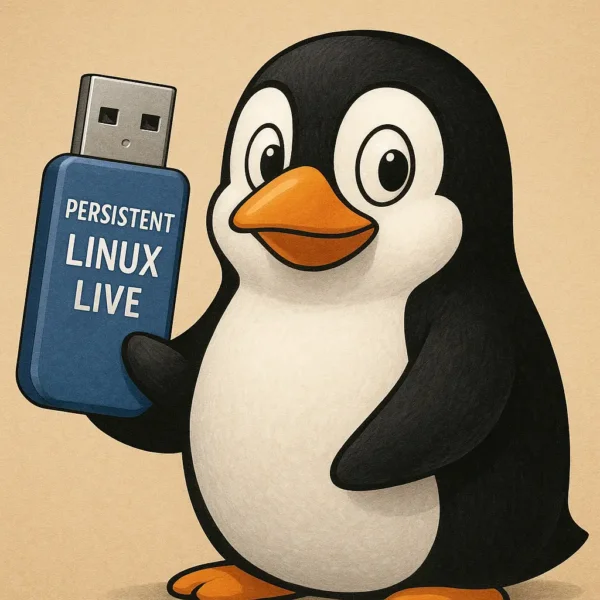What Is Persistent Linux and Why Use It? If you've explored tutorials on sites like Pen Drive Linux, you've probably come across the concept of creating a persistent Linux bootable USB. But what does that actually mean? In this guide, we'll break down how it works, why saving data across reboots matters, and how to set up your own portable Linux system that remembers your changes.

Wikipedia definition: "Persistence - in computer science refers to the characteristic of data that outlives the execution of the program that created it. Without this capability, data only exists in RAM, and will be lost when the memory loses power, such as on computer shutdown."
Understanding USB Persistent Linux That Retains Changes
Most Linux distributions offer a "Live" mode, a bootable operating system you can run from a USB stick or DVD. However, these sessions are temporary by default. When you reboot, everything resets, files, preferences, and installed software are lost.
With a special data layer added to your bootable USB, changes can be saved locally. This transforms a temporary live system into a reliable, portable desktop.
Why Persistence Makes a Difference
- Session continuity, Pick up where you left off with apps, settings, and documents intact.
- Consistent environment, Use your personalized Linux setup anywhere.
- Self-contained OS, Run the system without touching the host computer's internal drive.
How It Works Technically
This setup combines a read-only operating system with a writable "overlay", often stored as a file or partition on the USB stick. Technologies like overlayfs or aufs merge both layers during boot. That's what allows your Linux session to remember your changes.
Top Reasons to Use a Writable Live USB
From daily use to diagnostics, this approach has many benefits:
- Travel-ready OS, Carry your Linux system in your pocket, with files and tools always ready.
- System recovery, Repair, recover, or troubleshoot other systems safely.
- Experimentation, Learn and test Linux without impacting your main setup.
- Privacy-conscious use, Leave no trace on public or borrowed computers.
Advantages of a Persistent USB Setup
- Storage efficiency, Core OS is compressed; your changes are layered separately.
- Low wear, Base files run in RAM; only edits hit the disk.
- Easy portability, Back up your data layer or migrate it between systems.
- Pre-configured tools, Boot directly into your dev, recovery, or testing suite.
Limitations and Considerations
- No default encryption, If the drive is lost, your data could be at risk.
- Space usage, Writable storage fills up quickly with large updates or logs.
- Partial configuration retention, Drivers and kernel updates may not stick unless explicitly supported.
Tip: Ubuntu and related distributions support Casper mode, which allows you to preserve even more changes between sessions. See this guide on how to create a persistent Ubuntu bootable USB.
Top Tools to Build Your Own Persistent Linux USB
Ready to build a Linux system that saves your work? These tools make it easy:
- YUMI – Allows multiple distros on one drive, each with its own saved changes.
- UUI – Quick, reliable tool for single-distro USBs with persistent storage support.
- Rufus – Offers persistence options for Ubuntu-based systems with a simple slider.
- Ventoy + plugin – Excellent for booting multiple ISOs. Add a JSON config to enable data-saving support per distro.
- mkusb – More advanced, great for encrypted setups and full-featured installations.
Most of these utilities will create:
- A bootable ISO image (Ubuntu, Mint, Debian, Kali, etc.)
- An overlay or partition to retain your changes
- A boot config that includes a
persistentparameter
Final Thoughts on Persistence
A persistent Linux system on a USB drive offers flexibility, portability, and control, perfect for travel, recovery, or on-the-go development. Though it's not suited for every scenario (like full OS upgrades or high-security data), the benefits of this kind of setup far outweigh the drawbacks for many users. With the right tools and setup, you'll always have a bootable Linux system that works, and remembers.
